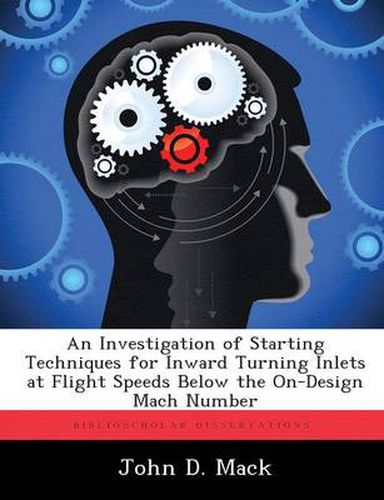Readings Newsletter
Become a Readings Member to make your shopping experience even easier.
Sign in or sign up for free!
You’re not far away from qualifying for FREE standard shipping within Australia
You’ve qualified for FREE standard shipping within Australia
The cart is loading…






This title is printed to order. This book may have been self-published. If so, we cannot guarantee the quality of the content. In the main most books will have gone through the editing process however some may not. We therefore suggest that you be aware of this before ordering this book. If in doubt check either the author or publisher’s details as we are unable to accept any returns unless they are faulty. Please contact us if you have any questions.
The purpose of this study was to create and investigate starting techniques aimed at allowing complex, three dimensional inward turning inlets to start by swallowing the shock wave associated with un-started inlets. The designed techniques were rooted in supersonic diffuser theory and the Kantrowitz limit, and the techniques attempted to alleviate the over contraction that occurs in inward turning inlets at flight speeds below the on-design Mach number. Five cases, three geometries at two flow conditions, and the base non-modified inlet at the two different flow conditions were generated and all were numerically simulated using a commercially produced numerical solver, CFD++. The simulations were computed using the inviscid Navier-Stokes/Euler equations in a steady state analysis to generate the shock wave, followed by a transient analysis to allow the shock to move in time. The results of the investigation show that all five cases proved to be sub-optimal as none were able to successfully swallow the shock during the transient simulation. However, the results from this analysis indicate that the slit case, designs that extended the initial spill areas of the inlet, appear to hold the most potential in the creation of a successful starting technique. The slit case holds the most potential because the slit Mach 2.7 case was just as effective as the slot Mach 2.7 case, yet the slit area was half the size as the designed slots. Future research should attempt to characterize the effects of slits at different Mach numbers and at various complexities of inlet and slit geometry.
$9.00 standard shipping within Australia
FREE standard shipping within Australia for orders over $100.00
Express & International shipping calculated at checkout
This title is printed to order. This book may have been self-published. If so, we cannot guarantee the quality of the content. In the main most books will have gone through the editing process however some may not. We therefore suggest that you be aware of this before ordering this book. If in doubt check either the author or publisher’s details as we are unable to accept any returns unless they are faulty. Please contact us if you have any questions.
The purpose of this study was to create and investigate starting techniques aimed at allowing complex, three dimensional inward turning inlets to start by swallowing the shock wave associated with un-started inlets. The designed techniques were rooted in supersonic diffuser theory and the Kantrowitz limit, and the techniques attempted to alleviate the over contraction that occurs in inward turning inlets at flight speeds below the on-design Mach number. Five cases, three geometries at two flow conditions, and the base non-modified inlet at the two different flow conditions were generated and all were numerically simulated using a commercially produced numerical solver, CFD++. The simulations were computed using the inviscid Navier-Stokes/Euler equations in a steady state analysis to generate the shock wave, followed by a transient analysis to allow the shock to move in time. The results of the investigation show that all five cases proved to be sub-optimal as none were able to successfully swallow the shock during the transient simulation. However, the results from this analysis indicate that the slit case, designs that extended the initial spill areas of the inlet, appear to hold the most potential in the creation of a successful starting technique. The slit case holds the most potential because the slit Mach 2.7 case was just as effective as the slot Mach 2.7 case, yet the slit area was half the size as the designed slots. Future research should attempt to characterize the effects of slits at different Mach numbers and at various complexities of inlet and slit geometry.